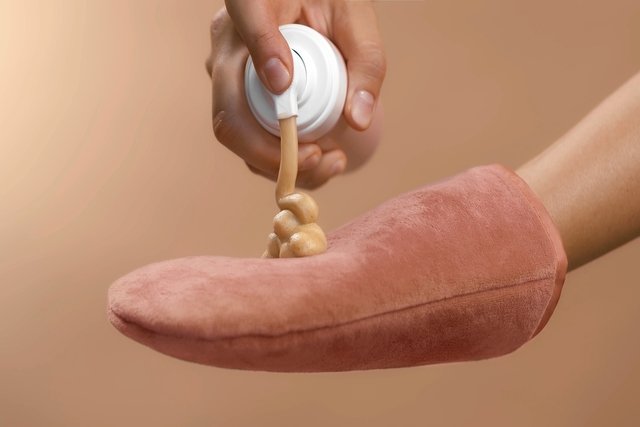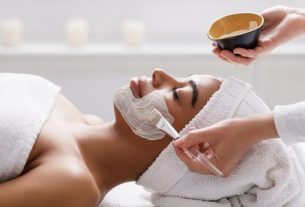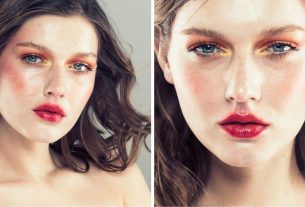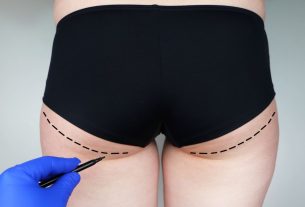Artificial tanning is a way to get tanned skin without having to be exposed to the sun. This type of tan can be obtained at home, using self-tanning products, or in beauty clinics through spray tanning.
Artificial tanning is a simple procedure, however it is important to pay attention to the application of the product, especially when using the products at home, to avoid leaving stains on the skin.
To guarantee the results of artificial tanning, it is important to continue using sunscreen and avoid applying moisturizer before tanning and avoid exfoliating after the procedure, as this can interfere with the tanning results, in addition to making the skin more irritated.
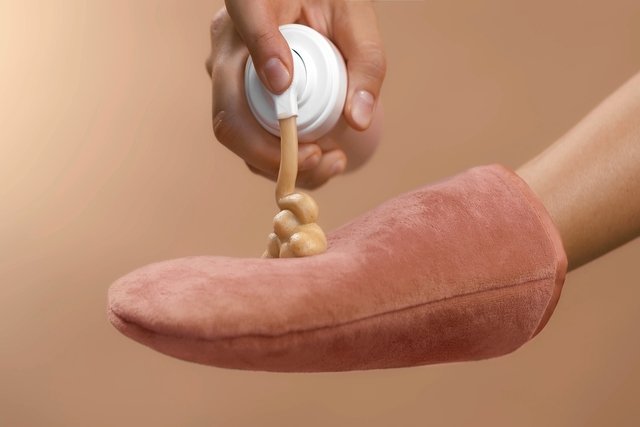
Types of artificial tanning
Artificial tanning can be classified into some types according to the technique used:
- Spray tanningwhich must be done in beauty clinics and the tanning product is placed inside a sprayer;
- Tanning with cosmetic productsin which tanning products, also called self-tanners, in the form of a cream or spray, are applied to the skin to ensure a tanned appearance, which can be done at home;
- Tanning in a tanning bedin which the person remains in a tanning bed, however this type of tanning was banned by Anvisa due to health risks.
Artificial tanning does not have a permanent effect, so the skin color returns to its natural color after a few days.
How artificial tanning is done
Artificial tanning is a simple procedure, which can be done at home, in the case of using cosmetic products, or in beauty clinics, in the case of spray tanning. In general, the step-by-step guide for artificial tanning is as follows:
- Wear a swimsuit or no clothes, depending on how you want your tan and marks;
- Apply the self-tanner to the skin, spreading it well, using a special glove suitable for applying this type of product. In the case of spray tanning, the product is sprayed onto the skin by the professional;
- Leave the product on your skin for 6 to 8 hours, in accordance with the instructions of the product manufacturer and/or the professional who performed the tanning;
- Take a shower to remove excess tanning product.
Both tanning at home and in beauty clinics guarantee a tan that can last up to 7 days, and must be repeated regularly to maintain the tan as desired. Furthermore, in the case of tanning at home, there is a greater possibility of getting spots and, therefore, it is important that the product is well spread to ensure uniformity of the skin.
Care before and after tanning
To guarantee the results of artificial tanning and promote skin health, it is recommended to use sunscreen and avoid sun exposure in the days following tanning to avoid irritating the skin.
Furthermore, it is not recommended to use moisturizers before tanning, as this can interfere with the results, and avoid exfoliation after the procedure, as it can also make the skin more irritated. However, it is still recommended to apply moisturizer to your skin after tanning.
It is also interesting that the tanning product is applied to a small area of the skin to check if there is any allergic reaction there and, thus, it is possible to ensure that tanning is done safely.
How to get a tan safely
The use of self-tanning creams, with dihydroxyacetone, is an excellent option for tanning your skin all year round, without putting your health at risk. These products do not stimulate the production of melanin, which is the pigment that gives the skin its color, they only react with the skin’s proteins, forming brown substances, therefore, they are not aggressive. This form of tanning leaves the skin golden and not burnt or reddened, as can happen with prolonged exposure to the sun or tanning beds. See how to use self-tanner without staining your skin.
Furthermore, sun exposure during the hottest hours, avoiding the hours between 12 and 4 pm, is also a way to obtain a healthy and long-lasting tan, but always with the use of sun protection.
Diet also has an influence on the intensity of your tan, so eating foods with carotenes, such as carrots, oranges, mangoes or strawberries, for example, also help you tan faster. Also watch the following video and see how to prepare a homemade recipe to tan faster:
Possible risks
The risks of artificial tanning are mainly related to the use of self-tanning products that contain substances that irritate the skin, increasing the risk of allergies. However, the risk of artificial tanning is greater when it is done in tanning beds, as the person is constantly exposed to artificial light.
Therefore, the possible risks of artificial tanning are:
1. Allergy
The allergy is normally caused by substances present in self-tanning products, which can be used both in beauty clinics and at home. Thus, after applying this product to the skin, the person may experience itching, a burning sensation and local redness.
2. Skin cancer
The development of skin cancer is one of the main risks of artificial tanning in tanning beds due to the presence of ultraviolet light that the equipment produces. The longer a person uses this type of tanning, the greater the chances of developing cancer.
The first signs of skin cancer can take years to appear and include spots that change color, size or shape and, therefore, if suspected, you should go to the dermatologist to analyze the skin and request a biopsy. in case of suspicion. Learn how to identify the signs of skin cancer.
3. Skin aging
The tanning bed emits UVA rays that penetrate the deepest layers of the skin, affecting the collagen and elastin fibers, leaving the person’s skin with a more aged appearance, with more marked wrinkles and expression lines, and with a tendency to develop small dark spots on the skin.
4. Vision problems
Vision problems can arise especially if the tanning session is carried out without protective glasses. Ultraviolet rays have the ability to penetrate the pupil and retina, causing changes such as cataracts, even if the person has their eyes closed but without protective glasses.


